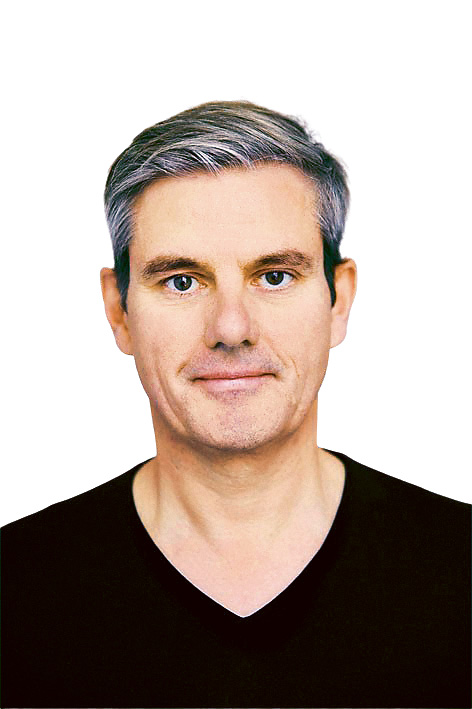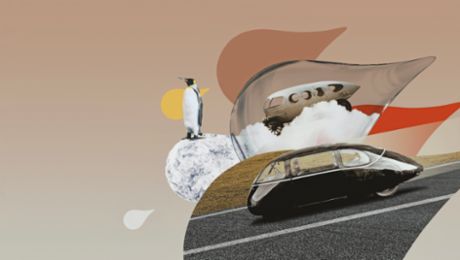Disruptive innovations do not optimize. They create new and better solutions. Disruptive innovations don’t just make our lives a bit more comfortable—they fundamentally change them for the better, just like the first cultivated plant, the einkorn, some 10,000 years ago. With that first grain, agriculture began, and people started forming settlements. The invention of the sailboat 6,000 years ago changed the world, as did later the nail, cement, the printing press and optical lenses. The digital computers of the 1940s unleashed the digital revolution and a series of disruptive innovations, including microchips, the PC and, of course, the internet, which has changed our lives more than any other new technology in the last three decades. With the current disruptive innovation of mRNA vaccines, we are able to arm ourselves against new epidemics.
What’s next? No one can know for sure, because unpredictability is in the nature of disruptive innovation. Individuals, societies and states can, however, help it along—and also ensure that new technology does more good than harm. There are three levers that are particularly effective in this regard:
→ FIRST: Highly innovative people need more support and freedom. Disruptive innovations are often brought into the world by ‘nerds with a mission’. At the Federal Agency for Disruptive Innovation, we call them ‘high potentials’ (‘HiPos’). They usually exhibit three outstanding characteristics: an extreme, often obsessive interest in their field, a high level of resilience when faced with setbacks, and a deep-rooted desire to have an impact for the good of the world. Social interaction is often not the forte of these individuals. Starting at an early age, educational systems need to create open spaces and support opportunities for ‘HiPos’ who think outside the box. After all, it’s not conventional wisdom that produces innovation. In many school and university support programs, however, socially awkward high-fliers fall through the cracks.
→ SECOND: Venture capital must live up to its name (again). Almost unlimited venture capital is available worldwide for digital platforms, which are often mere copies of business models tried and tested elsewhere. This is understandable: The risk, after all, is generally fairly predictable for investors. But wherever big leaps are being made with ‘deep tech’, for example in climate technologies and biotech, capital is scarce. In this case, the state and the market must work hand in hand to create better financing conditions for disruptive innovators. The state has the wherewithal to do this—by using smart tax incentives, its purchasing power (contracts for new technologies that still need to be developed) and by cutting red tape, including spinning off science-related startups from universities and publicly funded research institutions. And venture capitalists might ask themselves more often what impact they want to achieve with their investments other than short-term returns. The growing number of so-called ‘impact investors’ is an encouraging signal in this area.
“We believe that science and technology will find answers to the great challenges of our time.” Rafael Laguna de la Vera and Thomas Ramge
→ THIRD: As a society, we need to sharpen our understanding of what kind of innovations we want to develop in the future, and which values they will be based on. This doesn’t mean we need to reinvent the wheel. The philosophy of the Enlightenment provides orientation. The goal is disruptive innovations that make life better for the greatest possible number of people to the greatest possible extent. Valuable and meaningful benefits emerge when we focus on human needs, from the basic necessities of life to the potential for individual self-realization. Psychologist Abraham Maslow’s ‘pyramid of needs’, with its different levels ranging from basic needs to self-actualization, provides valuable guidance in this context, as do the United Nations’ 17 Sustainable Development Goals.
Where will all this lead us? As technological optimists, we believe that science and technology will find many answers to the great challenges of our time in the coming decades. They will bring us green energy from the wind and sun, hydropower and nuclear fusion in abundance. It could conceivably be so cheap that it will hardly be worth charging for it.
CO₂-free energy for less than two cents per kWh could radically reduce poverty and hunger worldwide. We can use it to remove large quantities of carbon dioxide from the atmosphere and halt climate change. That will make the world a much more peaceful place. Meanwhile, biomedical researchers are gaining a better understanding of the blueprint of life. With the help of genetic engineering and the health data revolution, we are on the scientific threshold of conquering major diseases: Cancer and dementia, cardiovascular disease and autoimmune disorders, mental illness and paralysis, blindness and severe hearing loss. We hope to succeed in slowing down the cell aging process significantly so that we can grow older in better health. And maybe even spend time with our great-great-grandchildren. Over the next 20 years, we will develop a system to redirect large asteroids heading toward Earth. And even though at least one of us two authors would not be willing to make the trip: We hope to establish a permanent colony on Mars by 2050. Why? That will help us humans rediscover our old spirit of discovery and develop the courage again to take the really big leaps.
The authors
Rafael Laguna de la Vera is the founding director of the Federal Agency for Disruptive Innovations.
Thomas Ramge is an author and keynote speaker. Recently, Econ-Verlag published their book “Sprunginnovation—Wie wir mit Wissenschaft und Technik die Welt wieder in Balance bekommen”
Info
Text first published in the Porsche Engineering Magazine, issue 2/2022.
Text: Rafael Laguna de la Vera und Thomas Ramge
Photos: Mattia Balsamini / SPRIND GmbH
Copyright: All images, videos and audio files published in this article are subject to copyright. Reproduction or repetition in whole or in part is not permitted without the written consent of Dr. Ing. h.c. F. Porsche AG. Please contact newsroom@porsche.com for further information.







